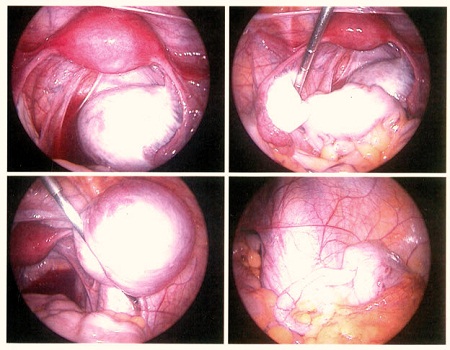Endometriosis is one of the major infertility cause in women. Endometriosis affects millions of women all around the globe. This is one of the primary causes of infertility among women. It affects primarily women in their reproductive years, even earlier as some do not have symptoms. Women are usually diagnosed at the age of 27. Consult your doctor if you have unchecked chronic pain in your pelvic area, you are at risk too.
What is Endometriosis?
 The endometrial lining is a group of tissue in the uterus that is shed during menstruation. When it is implanted outside the uterus or remains in it, abnormalities can exist. Endometriosis is the abnormal and painful disorder in which tissue grows outside the uterus. It commonly involves your ovaries, bowel or the tissue lining your pelvis. Women that have endometriosis may not have symptoms but it can be suspected by laparoscopy. Unfortunately for women with endometriosis that want to start trying to conceive, they should know that endometriosis affects women’s reproductive ability that leads to chronic pelvic pain and infertility. Fortunately, mild endometriosis does not cause infertility for a lifetime. Women diagnosed can bear children again after three to four years without any drug induced treatment. Infertility from endometriosis and its causes may be attributed to hormonal imbalance and anatomical barriers to conception.
The endometrial lining is a group of tissue in the uterus that is shed during menstruation. When it is implanted outside the uterus or remains in it, abnormalities can exist. Endometriosis is the abnormal and painful disorder in which tissue grows outside the uterus. It commonly involves your ovaries, bowel or the tissue lining your pelvis. Women that have endometriosis may not have symptoms but it can be suspected by laparoscopy. Unfortunately for women with endometriosis that want to start trying to conceive, they should know that endometriosis affects women’s reproductive ability that leads to chronic pelvic pain and infertility. Fortunately, mild endometriosis does not cause infertility for a lifetime. Women diagnosed can bear children again after three to four years without any drug induced treatment. Infertility from endometriosis and its causes may be attributed to hormonal imbalance and anatomical barriers to conception.
Endometriosis is a type of tubal infertility. Tubal infertility usually deals with the blockage of the pathway of the sperm to the mature ovum. Infections and adhesions also are classified as such.
All these, causes 25% of the global infertility involving the female reproductive system.
There can be pain with ovulation and menstruation. Dyspareunia or pain while having sexual intercourse may also be one of the symptoms. Irregular or heavy menstrual bleeding may also occur. Other than that, endometriosis is usually hard to detect since most women do not have any symptoms. The most unconventional cases are blood in the urine, chest pain, and coughing blood.
However the good news is there are effective treatments available in a variety of ways such as pain medication, hormonal treatments, and surgery. Some treatments include progestins and other contraceptive pills. Contraceptive pills might have side effects such as bloating and weight gain.

Image of Endometriosis, Wikipedia Image
The newest treatment for endometriosis would be inhibiting the reproductive hormones such as estrogen. These are classified as aromatase inhibitors. These drugs are still in the research stage since treatments induce bone resorption on the subjects. It means that bone mass is reduced during the course of the therapy.
When there is severe pain, a lesser form of surgery is performed by laparoscopy, utilizing laser to remove the endometrial tissues. Laparotomy is carried out if the endometriosis is extensive. The physician will open the affected area and physically remove the problematic tissues. When the disease has scattered, a major hysterectomy may be performed.
Ovarian cancer is a huge risk with patients with endometriosis. If you are diagnosed with endometriosis, do check for other forms of ovarian anomalies and lumps. As mentioned the risks are lessened with the use of birth control pills and correcting hormonal imbalances.



 Saving...
Saving...